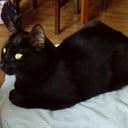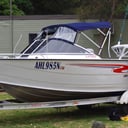What substance are a hedgehog’s quills made of?
Seventeen species of hedgehogs are native to Europe, Asia, and Africa. The distinct pointed quills of these cute little mammals are made of keratin, the same material that makes up our hair and fingernails.
The hedgehog’s spines are not poisonous or barbed and, unlike the quills of a porcupine, do not easily detach. An immature hedgehog’s soft spines do fall out though, and are replaced with adult spines, in a process called “quilling”. Spines may also be shed if an animal is diseased or extremely stressed.
A hedgehog may have up to 6,000 quills on its body. When threatened, they roll into a ball, causing the spines to point outward. In this tightly-curled position, the sharp quills on the creature’s back protect the softer tucked face, feet, and belly from predators. The quills may also occasionally serve as shock absorbers, cushioning the fall when a predator has second thoughts and drops the pointed mouthful.
Hedgehogs are primarily nocturnal (creatures of the night). Although some species are active during daylight hours, most types sleep for a large portion of the daytime. Cover is usually provided by a bush, grass, rock or a hole dug in the ground.
Although hedgehogs share certain physical similarities (like spines) with porcupines and echidnas, they are three distinct species, both in terms of body features and behavior. Hedgehogs feed on insects, porcupines consume a vegetarian diet, and echidnas lay eggs. They just happen to all use spines as a method of defense.
More Info:
www.livescience.com

